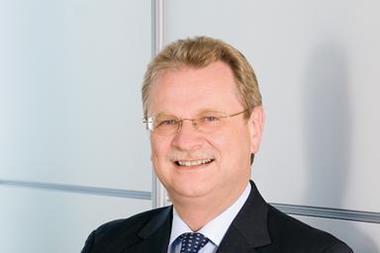An interview with Christian Mumenthaler, member of group executive committee, risk management, Swiss Re
What does your role involve?
The key mandate of the risk management division is to avoid surprises and take action in order to add value to Swiss Re. There are three main roles within this. There is quantitative risk management so that we know how much capital we need to carry. Then there is the risk governance role within the company so that it is very clear who does assurance activities and how. And finally, there is risk transparency – disclosure to third parties like rating agencies and external investors. Those are the three main pillars.
How much impact does regulation have on your work?
It is true that the number of regulatory initiatives has exploded, particularly in Europe with Solvency II, but regulation is not the main focus of our risk management work. Risk management is not here because of regulation but primarily for our internal purposes. We have engaged with the regulators through our CRO forum in Europe but this has been more a side job to ensure that we align our approach and help regulators to understand how we manage risks and ensure that regulation is aligned to the way we are doing this. If there are different regulatory frameworks, it becomes difficult to manage the company. So assurance and compliance are side jobs. Risk management requires a much more pro-active and forward looking approach.
What do you think are the key risks facing a group like yours?
On a very high level, something that we see changing is that there are more interdependency and correlation between risks in the world because of globalisation. More and more information is exchanged between countries, physically there is more movement of goods, people travel much more, and the financial markets are more closely linked. For example, you see correlation between the Swiss market index and, say the German index. Another example is hurricane Katrina and the impact that that had on oil prices. When Katrina hit a number of the oil wells in the Gulf, people knew about that quickly in a way that would not have occurred years ago. A hundred years ago, in Europe we would not have heard of an event of the magnitude of 9/11 until a few days later. Fifty years ago, it would have been in the newspapers the next day. But when it actually happened, many people in Europe saw it live and it had a huge psychological impact on the world. So things which used to be thought independent have suddenly become interdependent.
Then there are the natural catastrophe risks and those massive risks associated with things like climate change and pandemics.
For some years we have been developing internal risk models to capture these risks and our accumulation levels. When we have this information we develop tools to hedge these risks so that we are able to get a more balanced portfolio.
“Monitoring our risks and identifying new risks in advance means that we can act before they hit the balance sheet
Christian Mumenthaler, member of group executive committee, risk management, Swiss RE
On the operational risk side, our internal assurance makes sure that we identify all our operational risks and deal with the larger ones.
What do you think will be the challenges going forward?
I think one is the growing interconnection between risks in the world that I mentioned. Another one is the changing regulatory frameworks throughout the world. But this is an opportunity as well as a risk because we may achieve more convergence.
From the reinsurance side, we see a challenge as moving from the ‘buy and hold’ type of model to a ‘buy and sell’ model. We securitise a lot of our risks in the capital market.
How do you think risk management adds value to your activities?
We certainly add value by helping the organisation avoid surprises, and also by identifying all the risks and hedging the major ones.
Monitoring our risks and identifying new risks in advance means that we can act before they hit the balance sheet. We also have brought more transparent and efficient risk reporting so that our stakeholders know about our risk position. We are one of the few re/insurance companies that disclose their risk position in their annual reports.
Our dialogue with regulators, particularly in connection with Solvency II, and other external parties also adds value. It is very much a matter of trying to bring the external view of Swiss Re closer to our internal view.


















